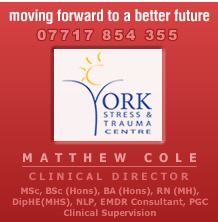Anxiety is a very common problem in the community. About one in twenty of the population will suffer from anxiety symptoms that are present for most of the time. It results in considerable suffering. This is known as Generalised Anxiety Disorder or GAD. A smaller number of people suffer from anxiety symptoms that come in short very distressing bursts. This is known as panic disorder.
What is Anxiety
What we mean by anxiety can vary a lot between individuals but tends to be made up of features of altered thoughts, emotions, behaviours and physical sensations. These are described below. Each of these features can influence each other leading to a worsening of the anxiety.
Altered Physical Sensations
Often anxious people are aware of their heart beating harder and faster. This is known as palpitations. Sweatiness and shaking can also occur. Sometimes people feel light-headed, dizzy and nausea as well as a range of other symptoms.
Altered Thoughts
Very often worrying is a feature of anxiety particularly in generalised anxiety disorder. Here people often become concerned that the worrying will harm them. In panic attacks people often believe that they may be at risk of fainting. Sometimes they interpret the palpitations as evidence of heart problems and again fret about the risk of ensuing harm or even death.
Altered Behaviours
With anxiety the person may be uneasy, jumpy and restless. They appear to be always on the lookout for possible danger in order to avoid such situations. In panic disorder the panic attacks may happen at any time. In some people, however, they happen only in certain situations such as when there are lots of people about. In this case a panic sufferer may simply avoid those situations and appear on the surface to have few problems in their lives. While in a panic attack, they may lie down, sit, or quickly remove themselves from the situation. Others use drugs or alcohol in the hope that this will help. Unfortunately, in the longer term they make anxiety worse.
Altered Emotions
In panic disorder the main emotion is fear. In less severe anxiety people feel keyed up and irritable. Unfortunately, in generalised anxiety disorder when the symptoms last for much of an individual's day people can feel desperate. Sometimes their mood can drop.
Causes
There is no one cause of anxiety disorder. In some cases it appears to run in families. Sometimes it also starts after a big life change such as a bereavement, childbirth, or losing a job. A smaller number of cases are associated with physical or other psychological illnesses. These include depression or thyroid problems. Anxiety can also be a feature of phobias, which are fears of different situations such as types of animals or of crowds. Lastly, some prescribed medications can make people feel anxious as a side effect, including some anti-depressants.
Consequences
Sufferers begin to avoid those things or places that they associate with their symptoms. This can get worse until it forms a significant part of the person's life. Fear of having a panic attack can be very disabling. Eventually it can prevent people from going about normal work or social activities and can lead to agoraphobia. Less commonly the distress and disablement caused by anxiety may cause periods of depression or drug and alcohol problems. It is therefore better to get treatment for anxiety problems rather than letting them continue.
Treatment
Treatment of anxiety can be by psychological (talking) treatments or by using prescribed medications.
Medications: In the past benzodiazepines (tranquilliser) medications were used such as diazepam (another name for Valium). Unfortunately, these drugs are addictive and become much less effective in the longer term. They are used much less commonly nowadays. More commonly anti-depressant medications are used. They have been shown to be effective but unfortunately the anxiety often comes back when the medication is stopped.
Psychological Treatments: Counselling and practical techniques to teach relaxation are found to be helpful by some. Likewise, self-help materials on tapes or in books can teach strategies to help people feel better. The psychological approach with the most evidence of effectiveness for anxiety disorders is Cognitive Behavioural Therapy (CBT).
CBT is likely to include the following:
Teaching about the nature of anxiety, including the physical symptoms. Any misinterpretations that such symptoms such as palpitations are harmful or dangerous can be corrected.
- Exploring the extreme and unhelpful thoughts that happen particularly when the sufferer is very anxious. Learning techniques to balance some of these biased thoughts.
- The features of worry can be explored and techniques tried to lessen the impact of worrying.
- Where many situations are being avoided they will be looked at. The therapy will attempt to reintroduce these into the life of the sufferer. This is done gradually in small steps and only when the client feels ready to try.
- Sometimes the therapy may include training in relaxation techniques to reduce the physical symptoms of anxiety.
- Where depression has become a feature of the person's problem this can also be treated using CBT.
Information about anxiety problems including panic is also available from: -
Triumph Over Phobia (TOP UK) | National Phobics Society |







